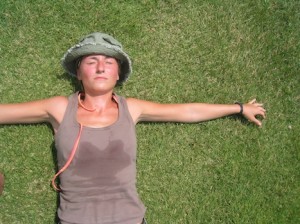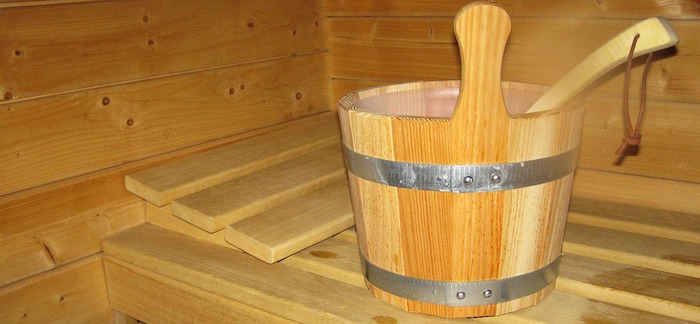If you’ve ever met die-hard Bikram Yoga fans, you’ll understand why hot yoga looks like a cult.
Bikram fans sweat for 90 minutes a day in rooms heated to 105°F, and they suffer through an entire class just so they can reach the “high” that comes afterwards.
Bikram yoga is not unique in its cult-like appeal. Other forms of yoga have tinges of the extremism and addiction that turns off many people thinking about trying yoga. But unlike chanting, exercising in extreme heat can cause severe damage, either by acute heat stroke, or more chronic imbalances in the body’s ability to regulate itself.
In a recent post, I wrote about extremism in the yoga world, which includes “too much heat.” Notice that I didn’t specify what temperature is “too much.” That wasn’t accidental. As with most of the extremes that I listed, “too much” depends upon the individual.
Currently, I practice Ashtanga yoga, which is done at room temperature; but before that I did both Bikram-style and heated (95°F) vinyasa which has more movement. I was drawn to the heated styles for many of the same reasons as other people:
- Increased flexibility due to the heat.
- Detoxifying effects of profuse sweating.
- A “high” after class when endorphins resulting from the heat kick in.
- Weight loss due to not only sweating, but also a decrease in eating and increased metabolism.
After switching to Ashtanga yoga, I noticed many things that have kept me coming back to this traditional sequence of poses:
- Even at room temperature, I’m able to heat my body sufficiently to do even the deepest poses safely.
- Without the excess heat, I can engage the bandhas, basically “locks” in the body that support the poses. During heated classes, as soon as I engage those, I overheat.
- My hydration levels are no longer imbalanced. I used to be thirsty all day long, even on days when I didn’t take class.
- I don’t feel drained after class; instead, I feel calm and energized at the same time.
- I can practice anywhere, without having to find a heated room (even outside in the winter).
- I’m no longer cold when the temperature is below 90°F.
- I feel better.
 I’m not at all denigrating hot yoga. Some people genuinely enjoy Bikram classes or heated vinyasa. But as I’ve said before, there is no “‘perfect” yoga.
I’m not at all denigrating hot yoga. Some people genuinely enjoy Bikram classes or heated vinyasa. But as I’ve said before, there is no “‘perfect” yoga.
I always emphasize to my students that they should let the body and breath be their guides. Americans tend to “power through” everything, thinking that suffering is part of achieving, but that’s not the case.
If you’re going to do hot yoga, keep the following tips in mind. These also apply to other types of yoga.
- Listen to your breath and body. If you feel pain or can’t breathe comfortably in a pose, back off.
- Yoga, like life, is a gradual process, not a destination. Give your body time to adapt to the poses and new experiences.
- Keep yourself properly hydrated. If you sweat profusely, also replenish your electrolytes. Don’t overdo the electrolyte drinks or pills, though. You can obtain potassium, sodium, and calcium from the food you eat (e.g. bananas, tomatoes, broccoli).
- If your yoga practice doesn’t help you focus, even outside of class, then you should take a look what you’re doing. You can also ask a yoga teacher for guidance.
__________
Photo: Veezzle


